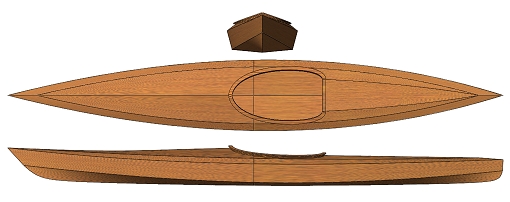So.... over the next couple weeks, I'll be catching you up on my new project.
Ever since kayaking in Maine, I've had the bug to build a sea kayak, get close to the water no other craft, perhaps get a bit of exercise, do some fly fishing and photography in the tiniest of waters and an excuse to make new friends. There's no lack of wood kayak plans available, most speedy and a bit tender craft. I wanted something relatively stable but still possible to roll and recover and it didn't need to be very fast. I'm also no slender man anymore, so wanted something large enough to carry my 200+ pounds, plus perhaps another 50 pounds in mixed fishing, photography camping gear. At the end of the search, I picked a simple design, the Okwata 15-26" by JemWatercraft
Okwata 15-26

Hard chined for respectable maneuverability, a nice shape that should be pretty simple to build and has enough volume to carry me on small overnight adventures. Also like the extra chine just below the shear, something becoming common on many newer designs to reduce paddle width.
Next time I'll review the plan packet and materials.










